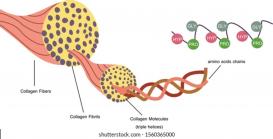In the first decades of the twentieth century, fiber materials from plants and animals were intensively studied with new analytical techniques, including X-ray crystallography and protein chromatography. Of special interest were protein fibers like keratin and collagen, which are the main components of wool, silk, and leather. The work was promoted and largely funded by wool growers and the textile industry that were concerned about the advent of various synthetic fibers and the threat this posed to the future of their businesses. Others saw new opportunities in these developments. The Kaiser Wilhelm Institute for Faserchemie in Berlin and the Textile Department at the University of Leeds, the hub of England’s wool economy, became key centers for the new interest in the scientific study of natural fibers. The research provided important insights into the structure and function of fibrous proteins and is credited with having laid the basis for the study of other biological macromolecules, including DNA, and the rise of molecular biology. Revisiting this history in the context of the Proteins and Fibers Working Group, the study will focus on the commercial and practical concerns that facilitated the interactions between breeders, the textile industry, and scientists, and lay at the heart of the development of the new analytical techniques.
This ongoing research forms the basis for a chapter I am preparing for an upcoming joint publication, a collection of the interactive work of the Protein and Fibers Working Group based on the workshop Fibers of Existence: Disordering Animals. The chapter will document the conversations with a conservator (Ellen Pearlstein) and myself around the topic of fibers. We discuss questions such as: What are fibers and why do they matter? How do we study them? What can we learn by engaging with each other’s research practices?
During my research stays at the MPIWG in July 2024 and July 2025 I will be working on drafting and revising the chapter. As a member of the editorial committee for the volume, I will also be working on the framing and editing of the work as a whole.
In addition, Lisa Onaga, the other co-authors, and myself will be working on the final draft of the paper “Lactase Persistence: A Model Case of Gene-Culture Coevolution Revisited.” For more details on this project see here.

